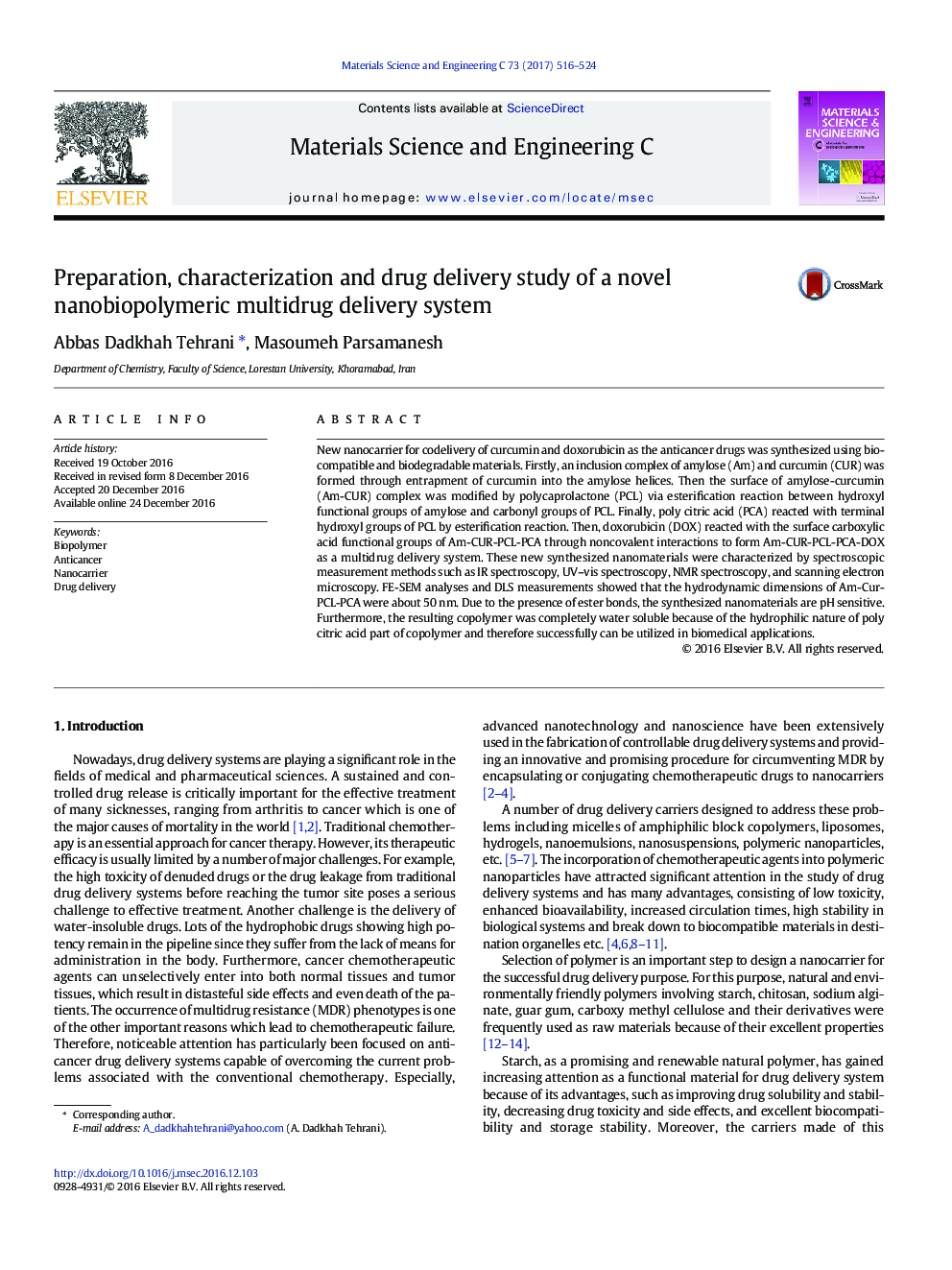| Article ID | Journal | Published Year | Pages | File Type |
|---|---|---|---|---|
| 5434957 | Materials Science and Engineering: C | 2017 | 9 Pages |
â¢A drug delivery system based on amylose-graft-PCL-PCA developed for codelivery of curcumin and DOX.â¢The IR and NMR spectra confirmed successful preparation of the copolymer.â¢The drugs release were more favorable at acidic pH for both drugs.â¢DLS measurements showed that the hydrodynamic dimensions of Am-Cur-PCL-PCA was about 50 nm.
New nanocarrier for codelivery of curcumin and doxorubicin as the anticancer drugs was synthesized using biocompatible and biodegradable materials. Firstly, an inclusion complex of amylose (Am) and curcumin (CUR) was formed through entrapment of curcumin into the amylose helices. Then the surface of amylose-curcumin (Am-CUR) complex was modified by polycaprolactone (PCL) via esterification reaction between hydroxyl functional groups of amylose and carbonyl groups of PCL. Finally, poly citric acid (PCA) reacted with terminal hydroxyl groups of PCL by esterification reaction. Then, doxorubicin (DOX) reacted with the surface carboxylic acid functional groups of Am-CUR-PCL-PCA through noncovalent interactions to form Am-CUR-PCL-PCA-DOX as a multidrug delivery system. These new synthesized nanomaterials were characterized by spectroscopic measurement methods such as IR spectroscopy, UV-vis spectroscopy, NMR spectroscopy, and scanning electron microscopy. FE-SEM analyses and DLS measurements showed that the hydrodynamic dimensions of Am-Cur-PCL-PCA were about 50Â nm. Due to the presence of ester bonds, the synthesized nanomaterials are pH sensitive. Furthermore, the resulting copolymer was completely water soluble because of the hydrophilic nature of poly citric acid part of copolymer and therefore successfully can be utilized in biomedical applications.
Graphical abstractDownload high-res image (146KB)Download full-size image
